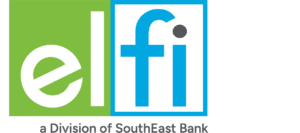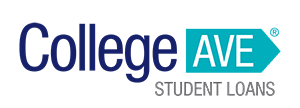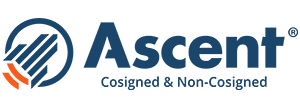Having federal student loans comes with a lot of benefits. Most options don’t require a credit check, so almost everyone can borrow. Federal loans come with a six-month grace period, so you’ll start paying back your loans after you graduate (and hopefully land a stellar new job). Federal loans also come with the option to repay with income-driven repayment (IDR) plans.
IDR plans allow you to pay back your loans on a track that’s best for your finances and family size. Your monthly payment amount is based on your discretionary income and the number of people in your household. Lowering your payment through an income-driven repayment plan like PAYE or REPAYE means you’re less likely to miss payments. You’ll also be able to steadily build up your credit score, and if your loan still isn’t paid off after 20 or 25 years the balance is forgiven.
There are a few different IDR plans, including:
- Income-based repayment (IBR)
- Pay as you earn (PAYE)
- Revised pay as you earn (REPAYE)
- Income-contingent repayment (ICR)
Many people have trouble deciding between two of the major plans: PAYE vs. REPAYE. They are similar in many ways, so make sure you know the difference between both plans before choosing one.
PAYE vs. REPAYE: The similarities
Both PAYE and REPAYE are IDR plans that set your monthly payment at no more than 10% of your discretionary income. The government determines your discretionary income by taking the difference between your annual income and 150% of the poverty-level guideline for your family size and state.
And both PAYE and REPAYE set the same repayment timeline for loans taken out for your undergraduate degree. If you haven’t completed your undergraduate loan repayment after 20 years for either PAYE or REPAYE, your loans are forgiven. If you have loans that you took out for graduate or professional school, REPAYE adds an extra 5 years to that figure.
PAYE and REPAYE plans allow the same types loans to qualify. Parent PLUS loans aren’t eligible for either plan, but the following loan types are qualified:
- Direct Subsidized Loans
- Direct Unsubsidized Loans
- Direct PLUS Loans (not made to parents)
- Direct Consolidation Loans (no loans that include PLUS Loans to parents)
Some Federal Stafford Loans might be eligible if they’re consolidated first.
PAYE vs. REPAYE: The differences
While the names are quite similar, these plans have some big differences to look out for:
- REPAYE has extra repayment time. If you received qualifying loans during graduate or professional study, you have 25 years before you get forgiveness, compared to 20 years with PAYE. If you took out loans for grad school, PAYE may be a better option.
- PAYE is for new borrowers only. Your eligibility for PAYE is directly tied to when you took out your federal student loans. Generally speaking, if you received your loans after October 1, 2011 you qualify.
- PAYE will cap your repayment amount. If you’re set to owe more each month under PAYE than you would under the Standard Repayment Plan, you wouldn’t qualify for PAYE in the first place. Under PAYE, you’ll never owe more than you would on the standard plan.
- REPAYE considers both spouses incomes. Unless you are separated from your spouse, REPAYE will look at your spouse’s income if you are married – even if you file taxes separately. If your spouse’s income is significant, it will increase your monthly payment. With PAYE, you can avoid having your spouse’s income considered by filing taxes separately. As such, it can be a better option for married individuals.
- PAYE has an income requirement to qualify. For PAYE, you need a low income relative to your total student debt load to qualify. REPAYE has no such requirement.
- PAYE and REPAYE cover your unpaid interest differently. With PAYE, the government will cover all unpaid interest that accrues on your subsidized loans in the first 3 years of repayment. REPAYE covers that as well, but there’s an extra bonus – the government will pay 50% of your unpaid interest on unsubsidized loans during all periods, and 50% of the interest on your subsidized loans after the first three years of full coverage are up.
The 2 Best Companies to Refinance Student Loans
Our Top-Rated Picks for 2024 Offer Low Rates and No Fees

PAYE vs. REPAYE: Which one is right for you?
In general, PAYE is the preferred option, provided that your loans aren’t too old and your income isn’t too high to qualify. PAYE caps your payments and is better for married borrowers — even if you’re not married yet, this is something to think about if you’ll be on the plan for a long time. REPAYE has no payment cap, so if you (or your spouse’s) income increases, you could end up paying more per month than you would on the standard 10-year plan.
That said, REPAYE may be a reasonable option for single borrowers who don’t expect a significant increase in income. The government’s coverage of your unpaid interest is a little better with REPAYE, so this might be a good situation to take advantage of that — especially if you only plan on going on an income-driven plan for a few years while you get your feet on the ground.
Do the math for both plans and consider a few different factors, like:
- Are you married? If so, both incomes are considered under REPAYE. A PAYE plan would limit this if you and your spouse file taxes separately.
- Do you have lots of student loan debt? Different career fields and majors could mean taking on more loan debt than others. A capped repayment plan through PAYE could lower your monthly payments.
- Will you hit the income cap on PAYE? If your monthly payments on PAYE will exceed your monthly payment on the Standard Repayment Plan, your only choice is REPAYE.
Alternative plans to PAYE and REPAYE
In general, IDR plans are crafted to help you make your monthly payments on time without falling behind, crushing your credit score, and putting your loans in default. But PAYE and REPAYE aren’t the only options around. Here are a few alternatives:
Direct Consolidation Loan — You can consolidate your loans and have one manageable payment each month rather than many. These loans are only offered to federal student loan borrowers; private student loans don’t qualify. When you consolidate student loans, you can extend your repayment term up to 30 years total, which will lower your monthly payment.
Student Loan Refinancing — If you have a mix of private and federal student loans, or you have strong credit and you’re looking to get a lower interest rate, you can try refinancing. With refinancing, you take a new loan out to pay off your outstanding loans. You’ll then have one payment each month for the new loan, with a new interest rate and term based on your credit score and income. But keep in mind that refinancing doesn’t guarantee you a lower interest rate or better loan terms than what you currently have. You can use Purefy to find the best rate for you.
Other IDR plans — Income-Based Repayment (IBR) caps your repayment amount to 10% of your discretionary income and no more than what you would pay on a Standard Repayment Plan. Income-Contingent Repayment (ICR) caps your payment at 20% of your discretionary income. ICR is the only income-driven repayment plan available for Direct PLUS Loans for parents.
Even though many IDR plans are similar, they have small differences. Make sure you consider these differences before choosing the right plan.



















